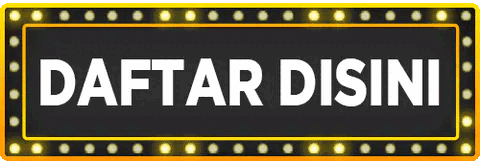TOTO188
TOTO188 ⚡ Super Situs Toto Agen Darat Togel Terbesar 2024
TOTO188 ⚡ Super Situs Toto Agen Darat Togel Terbesar 2024
Couldn't load pickup availability
Selamat datang di era baru perjudian togel online, di mana TOTO188 muncul sebagai pelopor situs togel terpercaya dan terbesar di tahun 2024. Sejak awal kemunculannya, TOTO188 telah mendapatkan tempat khusus di hati para sobat pecinta togel di Indonesia, berkat komitmennya pada keamanan, keadilan, dan kenyamanan pemain. Dengan sejarah yang kaya dan reputasi yang tak terbantahkan, TOTO188 terus berinovasi untuk memberikan pengalaman bermain togel online, game online, serta live casino online yang tak tertandingi.
Kenapa TOTO188? Keunggulan yang Tidak Dimiliki Lainnya
TOTO188 berdiri dengan kebanggaan, berkat lisensi resmi dari PAGCOR dan sistem server luar negeri yang canggih. Ini bukan hanya soal keamanan data pemain, tapi juga tentang keadilan dalam setiap permainan. Kebijakan fair play kami menjamin bahwa setiap kemenangan, besar atau kecil, pasti dibayar penuh tanpa kecuali. TOTO188 menjadi rumah bagi para pecinta togel, tidak hanya merajai dunia digital tetapi juga menawarkan kehadiran fisik melalui agen-agen darat di seluruh Indonesia.
Keunggulan TOTO188 Sebagai Agen Darat Togel Terbesar
| Keunggulan | Deskripsi |
|---|---|
| Lisensi Resmi | Sebagai bukti otentik dari keamanan dan kepercayaan, TOTO188 mengantongi lisensi resmi dari Philippine Amusement and Gaming Corporation (PAGCOR). Ini menjamin bahwa setiap aktivitas di situs ini dijalankan dengan standar internasional. |
| Server Canggih | Menggunakan teknologi terdepan, situs kami memastikan data dan transaksi pemain aman dari ancaman siber. |
| Fair Play | Di situs kami, kemenangan Anda, berapapun jumlahnya, dijamin akan dibayar penuh. Kami percaya dalam menjaga kepercayaan dan keadilan sebagai fondasi utama. |
| Agen Darat di Seluruh Indonesia | Jaringan agen darat TOTO188 mempermudah akses bagi pemain yang lebih memilih transaksi fisik atau membutuhkan bantuan langsung. |
Variasi Game di TOTO188: Lebih dari Sekadar Togel
Selain togel, TOTO188 juga menyediakan permainan slot gacor dan live casino yang menjadi favorit para pemain. Dengan berbagai pilihan game, kami berusaha memenuhi setiap kebutuhan hiburan member kami.
Daftar Pilihan Game Lengkap di TOTO188
- Togel Online: Nikmati berbagai pasaran togel populer dan lengkap seperti hongkong, angola, singapura, quanzhou, sydney, neworlean, dan lain lain.
- Slot Gacor: Temukan berbagai game slot gacor dan lengkap dengan jackpot terbesar saat ini. Situs kami bekerjasama dengan banyak provider game slot terpopuler seperti Pragmatic Play, PG Soft, Habanero, dan lain-lain.
- Live Casino Online: Rasakan pengalaman kasino nyata dari rumah Anda.
Cara Daftar TOTO188: Panduan Lengkap
Berikut ini adalah panduan langkah demi langkah untuk mendaftar di TOTO188, baik via mobile, desktop, maupun via agen darat:
Cara Daftar Via Mobile
- Kunjungi Situs: Buka browser smartphone Anda dan masuk ke situs resmi TOTO188.
- Klik Daftar/Register: Temukan dan klik tombol daftar yang tersedia di halaman utama.
- Isi Formulir: Lengkapi formulir dengan informasi diri yang valid dan akurat.
- Berikut dibawah ini adalah gambar tampilan situs toto188 via mobile. gambar pertama adalah halaman depan, dan gambar kedua adalah halaman registrasi. Apabila membutuhkan bantuan, Anda bisa menghubungi layanan livechat.


Cara Daftar Via Desktop
- Akses Situs: Gunakan browser pilihan Anda untuk mengunjungi situs TOTO188.
- Pilih Daftar: Cari tombol daftar di pojok kanan atas dan klik.
- Lengkapi Formulir: Isi semua informasi yang diperlukan di formulir pendaftaran.
- Berikut dibawah ini adalah gambar tampilan situs toto188 via desktop. Apabila membutuhkan bantuan, Anda bisa menghubungi layanan livechat yang siap membantu Anda.

Cara Daftar Melalui Agen Darat TOTO188
- Temukan Agen Terdekat: Hubungi agen darat atau bandar darat TOTO188 di area Anda.
- Registrasi Langsung: Agen akan membantu proses pendaftaran dan transaksi Anda.
- Dukungan Penuh: Manfaatkan layanan tambahan dan dukungan langsung dari agen.
Promo dan Bonus Menarik TOTO188: Keuntungan Lebih Setiap Hari
Di TOTO188, kami tidak hanya menawarkan pengalaman bermain togel, slot dan casino online yang terbaik, tapi juga beragam promo dan bonus menarik yang dirancang khusus untuk meningkatkan kepuasan member. Dengan kebijakan reward yang menarik, kami bertujuan untuk memberikan nilai tambah bagi setiap pemain, baik itu pemain baru maupun yang sudah lama bergabung. Berikut ini adalah highlight dari beberapa promo dan bonus yang bisa Anda nikmati:

daftar promo toto188
Bonus Sambutan untuk Member Baru (New Member 10%)
- Bonus 10% di Depan: Untuk menyambut member baru, TOTO188 menawarkan bonus sebesar 10% dari deposit pertama Anda dengan maksimal bonus sebesar Rp. 25.000. Ini merupakan cara kami untuk mengucapkan selamat datang dan memberikan Anda modal tambahan untuk memulai petualangan Anda di dunia slot dan casino online.
Bonus Redeposit Harian (Next Deposit 5%)
- Bonus 5% untuk Next Deposit: TOTO188 mengerti bahwa kepuasan member adalah prioritas, oleh karena itu kami menyediakan bonus redeposit sebesar 5% untuk setiap deposit selanjutnya yang Anda lakukan setiap hari dengan maksimal bonus adalah Rp. 100.000 perhari. Ini adalah cara kami untuk menghargai kesetiaan dan aktivitas Anda di situs kami.
Cara Klaim Bonus
Untuk mengklaim bonus yang tersedia, member cukup menghubungi livechat yang tersedia dimana livechat kami tersedia setiap harinya selama 24 jam penuh. Pastikan untuk membaca dan memahami syarat dan ketentuan yang berlaku agar proses klaim berjalan lancar dan Anda dapat segera menikmati bonus Anda.
Syarat dan Ketentuan
Seperti promo dan bonus pada umumnya, penawaran dari TOTO188 ini juga memiliki syarat dan ketentuan yang berlaku. Kami menganjurkan semua member untuk membaca dan memahami detail syarat dan ketentuan untuk memastikan pengalaman bermain yang menyenangkan dan menguntungkan.
Di TOTO188, kami berkomitmen untuk terus menyediakan penawaran terbaik dan paling menarik untuk semua member kami. Promo dan bonus ini adalah salah satu cara kami untuk mengucapkan terima kasih atas dukungan dan kepercayaan Anda. Jadi, jangan lewatkan kesempatan untuk mendapatkan lebih banyak keuntungan setiap hari dengan bergabung dan bermain di TOTO188.
Testimoni Member: Bukti Nyata Keunggulan TOTO188
Para member setia TOTO188 seringkali berbagi cerita dan pengalaman mereka, dari kemenangan besar hingga layanan pelanggan yang responsif. Testimoni ini membuktikan komitmen kami terhadap kepuasan pemain dan menjadikan kami pilihan utama bagi banyak togel mania. Berikut adalah beberapa testimoni dari mereka:
- “Bermain di TOTO188 selalu memberikan pengalaman terbaik. Kemenangan saya selalu dibayar tepat waktu.”
- “Variasi game di TOTO188 tidak ada habisnya, selalu ada sesuatu yang baru untuk dicoba!”
FAQ: Pertanyaan yang Sering Ditanyakan tentang TOTO188
Q: Apakah TOTO188 aman?
A: Ya, dengan lisensi resmi PAGCOR dan sistem server canggih, kami menjamin keamanan total bagi pemain kami.
Q: Bagaimana cara menarik dana?
A: Proses penarikan dana di TOTO188 mudah dan cepat, dengan banyak pilihan metode pembayaran.
Kesimpulan
Dengan jaringan agen bandar darat yang luas, keamanan terjamin, variasi permainan yang lengkap, dan sistem fair, TOTO188 berdiri sebagai situs togel, slot dan casino online terbesar dan terpercaya di tahun 2024. Kami mengundang Anda untuk bergabung dengan komunitas kami dan memulai perjalanan menang bersama TOTO188. Daftar sekarang dan rasakan sendiri kenapa ribuan pemain memilih TOTO188 sebagai rumah judi online mereka.
Keyword Terkait
- 10 daftar agen togel resmi toto 188
- 10 daftar bandar togel resmi toto 188
- 10 daftar situs togel resmi toto 188
- 10 daftar situs toto terpercaya toto 188 4d
- 5 daftar link toto togel terpercaya toto 188 4d
- Agen togel resmi toto 188 4d
- Agen togel terbesar toto 188 4d
- Bandar togel resmi toto 188 4d
- Bandar togel terpercaya toto188
- Link togel resmi toto 188 4d
- Situs slot togel resmi 4d toto 188
- Situs togel 4d terpercaya toto188
- Situs togel slot terpercaya toto 188
- Situs togel terbesar toto 188 4d
- Situs togel toto resmi toto 188
- Situs toto terpercaya toto188 4d
- Situs toto togel resmi toto 188 4d
- Situs toto togel terbaik toto 188 4d
Share


